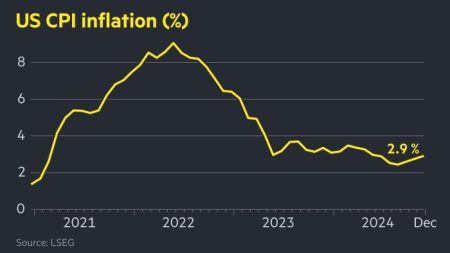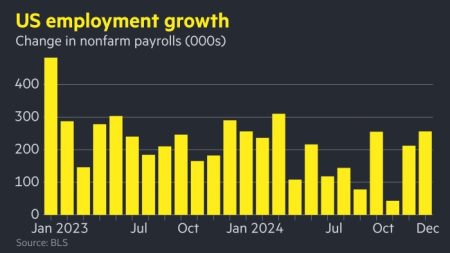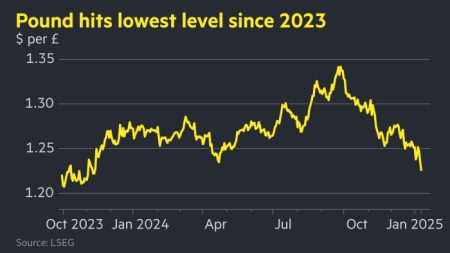Welcome to the first Free Lunch on Sunday. I’m Tej Parikh, the FT’s economics editorial writer, occasional columnist and Alphaville blogger.
Economists, investors and journalists all like to develop neat explanations to help make sense of the global economy. In this newsletter I will test them by presenting alternate narratives. Why? Well, it’s fun — and because it wards off confirmation bias.
Let’s begin with Europe’s unloved equities. We’ve read ad nauseam about how booming American stocks are leaving their transatlantic counterparts in the dust, while European industry faces several headwinds. It leaves an image of Europe as a corporate has-been. Are the continent’s companies really that bad? Here are some counterpoints:
The case for European stocks
America’s S&P 500 is in the midst of an artificial intelligence-led boom. The “Magnificent Seven” tech stocks make up around one-third of the index, and their market capitalisation surpasses the entire value of the French, British and German bourses combined. Tech accounts for around just 8 per cent of the Stoxx Europe 600. AI euphoria has mostly passed the continent by.
But here’s something for perspective. Take Nvidia out of the S&P 500 and its total returns underperform the eurozone’s stock benchmark since this bull market began in late 2022.
There are a few interpretations of this datapoint. First, the S&P 500’s bull run mostly reflects a bet on AI (particularly Nvidia). Second, despite less tech exposure and a slow-growing economy, eurozone stocks have actually performed quite well. (The “S&P 499” still includes the six remaining “Magnificents”).
Charles Schwab’s chief global investment strategist, Jeffrey Kleintop, who flagged the above chart, also points out that the eurozone’s forward price-to-earnings ratio trades at a historic discount to the S&P 500, creating scope for European valuations to rise further.
Either way, European equities clearly have an underlying appeal. Where is it coming from? Goldman Sachs calls the continent’s dominant listed companies “the Granolas”. The acronym covers a diverse group of international companies spanning the pharmaceutical, consumer and health sectors. Together, they account for about one-fifth of the Stoxx 600.
Their performance against the Magnificent Seven has only recently diverged. The S&P 500 — which has around 70 per cent revenue exposure to the US — got a jolt following the election of Donald Trump.
They are no corporate pushovers. Novo Nordisk produces the in-demand Wegovy weight loss drug. LVMH is unrivalled among luxury brands. ASML is a global specialist in chip design. Nestlé is an international food staple.
They didn’t end 2024 well. Novo Nordisk’s latest obesity drug had “disappointing” test results, LVMH is suffering from weak Chinese demand and tough macroeconomic conditions are eating into Nestlé’s bottom line. Still, they are established, broad businesses with global exposure, low volatility and strong earnings — and some are now undervalued.
But Europe is more than the Granolas. Other companies are competitive across sectors, including in tech: Glencore, Siemens Energy, Airbus, Adidas, and Zeiss to name a few.
Small listed European businesses also tend to outperform their American counterparts. About 40 per cent of US small caps have negative earnings, compared with just over 10 per cent in Europe. The winner-takes-all dynamic may be stronger in the US, where tech behemoths suck capital and talent away from smaller companies. (This shouldn’t detract from genuine scaling challenges in Europe.)
European corporates also rely more on relationship-based, illiquid funding, unlike in the US, where listed equity dominates. That may encourage longer-term corporate governance in Europe, but also highlights the challenges of comparing US and European stock performance (the liquid equity flows aren’t in the same league).
Regarding the Trump tariff threat, it’s not all disaster for European companies either. Stoxx 600 groups derive only 40 per cent of their revenues from the continent. (For measure, Frankfurt’s Dax rose close to 20 per cent last year, outperforming European peers, despite Germany’s lacklustre economy.) A stronger dollar would also boost the earnings of European companies with sizeable US sales.
In sum, the stellar returns of the US stock market do not mean that European companies are no good. Rather, investors are willing to pay a premium to get exposure to AI (and Trump 2.0) — one that is looking harder to justify.
Other than the value proposition, there are catalysts that may lure more investors to European stocks: disappointing AI results, lower interest rates in Europe, Trump risks and further stimulus attempts in China.
And, even if its listed companies make a lot of their money outside Europe, there is a domestic upside, too.
First, the European economy has arguably shown agility and resilience in the face of unprecedented shocks, for instance by pivoting away from cheap Russian energy. Total manufacturing production is largely unchanged since the beginning of Trump’s first term (pharma and computer equipment have picked up the slack from car production). So-called peripheral European economies are also performing better.
Then there’s the longer-term domestic earnings and financing outlook. Though France and Germany face political instability, the rising urgency among policymakers to address the bloc’s subdued productivity growth is at least leading to a more encouraging discourse on reforms. There is growing consensus on the need for a true capital markets union to drive scale, deregulation to support innovation, a more pragmatic approach to free trade and China, a debt brake rethink in Germany, investment in digitalisation and lower energy costs. Mario Draghi’s report on European competitiveness has added momentum.
America’s financial, innovative and tech advantage is unquestionable. And whether Europe can actually execute important reforms is another matter. Yet the comparative surge of US stocks — given access to vast liquidity, tech expertise and exposure to AI — hides strengths in Europe’s listed businesses that I, at least, had under-appreciated. The continent has diverse, resilient and international companies with established use cases (while AI is still looking for one). That’s a solid platform for investors to exploit — and for policymakers to build on.
What do you think? Message me at [email protected] or on X @tejparikh90.
Food for thought
Age is a vital demographic statistic. But what if we are thinking about it wrongly? A fascinating working paper finds that chronological age is an unreliable proxy for physiological functioning, given vast differences in how ageing unfolds across people. The authors reckon our linear view of ageing could limit the ability of our economies to fully harness the benefits of rising longevity.
Read the full article here













